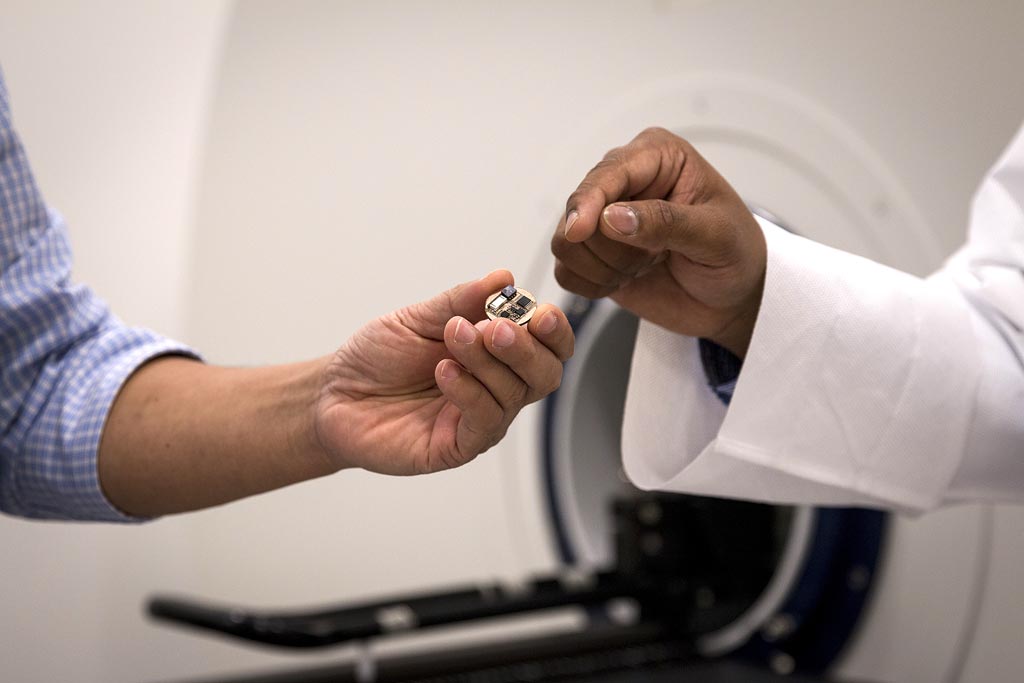MRI Device Bridges Neuro-Technologies for Medical Diagnostics
By MedImaging International staff writers
Posted on 21 Sep 2017
A smart, self-learning diagnostic device could allow patients to be monitored more effectively by performing concurrent medical imaging and recording.Posted on 21 Sep 2017
Under development by researchers at Purdue University (Lafayette, IN, USA), the multimodal wireless recording system can be integrated with any magnetic resonance imaging (MRI) scanner to acquire electrophysiological signals, such as electroencephalogram (EEG) and functional magnetic resonance imaging (fMRI). The device stimulates, records, and images neurological organs via the MRI system, and is expected to provide improved safety, efficacy, and diagnostic precision in patients with diseases such as epilepsy, Parkinson’s disease, and depression.

Image: A new device allows concurrent medical imaging and neurological recording (Photo courtesy of Shannon Kane / Purdue).
The wireless device, which is about the size of a coin and is directly powered and operated by the MRI, can provide higher quality neural recording and stimulation than current systems, since it has a learning capacity that identifies when to start and stop recording, capturing only useful signals. According to the researchers, it is also much more affordable than commercial systems. The new device was presented at the International Society for Magnetic Resonance in Medicine annual conference, held during April 2017 in Honolulu (HW, USA).
“What we’ve developed is a small device that can be placed in an MRI system to serve as a platform to combine all other imaging technologies,” said device co-developer biomedical engineer Ranajay Mandal, MSc, of the Purdue College of Engineering. “This way the patient can be monitored for more than one diagnostic result at a time, and researchers and doctors are able to obtain much more information all at once.”
“MRI is a very common imaging tool, used in every medical domain to produce high-resolution information about the body and organs. However, when a patient is receiving an MRI scan, it is very difficult to also monitor brainwaves, ECG, or other biological signals,” added device co-developer Nishant Babaria, MSc. “MRI alone does not always provide enough information to clinicians. There is tremendous scientific and clinical value in using multiple technologies together on a single platform.”
fMRI measures brain activity by detecting changes associated with blood flow, based on the fact that cerebral blood flow and neuronal activation are coupled. By using blood-oxygen-level dependent (BOLD) contrast, neural activity can be imaged by observing the hemodynamic response related to energy use by brain cells. Since the early 1990s, fMRI has come to dominate brain-mapping research because it does not require surgery, contrast agents, or ionizing radiation.
Related Links:
Purdue University














